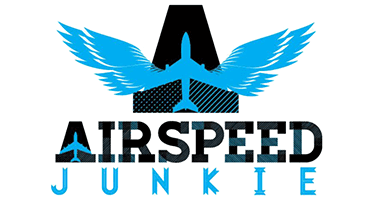Airbus A350 | Features, Comfort & Efficiency
The Airbus A350, launched in 2015, represents the cutting edge of aviation technology. Known for its efficiency and passenger comfort, this twin-engine, long-range aircraft is a favorite for long-haul flights. We’ll explore its design, performance features, and what makes it a top choice for airlines.
Key Takeaways
-
The Airbus A350is a long-range, wide-body aircraft designed for efficiency and passenger comfort, with notable variants A350-900 and A350-1000 accommodating different capacities and ranges.
-
Advanced technologies, including a clean sheet design, lightweight composite materials, and optimized aerodynamics, contribute to the A350’s fuel efficiency, achieving a 25% reduction in fuel burn compared to older models.
-
The A350 enhances passenger experience through its spacious Airspace™ cabin, premium seating options, and superior air quality features, making it a popular choice among airlines, evidenced by over 1,300 confirmed orders.
A350 Aircraft Overview

The Airbus A350 is designed as a long-range, wide-body twin-engine airliner, marking a significant evolution in aircraft design since its introduction on January 15, 2015. The A350 family includes the A350-900 and A350-1000 models, each catering to different market needs and passenger capacities. The A350-900 typically accommodates between 300 and 350 passengers, offering a maximum range of 15,000 kilometers, making it ideal for long-haul flights and diverse airline operations.
The larger A350-1000 variant can seat between 350 to 410 passengers and extends the range to 16,500 kilometers, further enhancing its versatility for ultra-long-haul routes.
Both models are renowned for their advanced technology, fuel efficiency, and passenger comfort, setting new benchmarks in the aviation industry. The A350 family’s ability to adapt to various airline requirements while maintaining high performance and efficiency underscores Airbus’s commitment to innovation and excellence in aircraft manufacturing.
Design and Engineering Excellence
The Airbus A350 stands as a testament to design and engineering excellence, incorporating the latest technologies and materials from the ground up. This clean sheet design approach allowed Airbus engineers to break free from the constraints of previous models and create an aircraft that embodies modern efficiency and performance.
The A350 integrates cutting-edge technology and lightweight materials, such as carbon-fibre-reinforced polymers, ensuring high performance, reduced weight, and improved fuel economy. The design philosophy behind the A350 includes its clean sheet design, advanced aerodynamics, and the use of lightweight materials.
Clean Sheet Design
The clean sheet design methodology enabled Airbus to develop the A350 with a fresh approach, focusing on modern efficiency and innovation without being constrained by earlier aircraft models. This innovative concept contributes to improved aerodynamics and weight savings, setting the A350 apart from older designs.
The common cockpit design allows pilots to transition between different Airbus aircraft with minimal additional training, enhancing operational flexibility.
Advanced Aerodynamics
The Airbus A350 incorporates advanced aerodynamic features that significantly enhance its performance and fuel efficiency. One of the standout features is its unique wing design with a high aspect ratio, which allows for improved lift and reduced drag, ensuring smoother and more efficient flights. The addition of sharklets at the wingtips further improves the aircraft’s aerodynamic efficiency, contributing to lower fuel burn and operational costs.
These aerodynamic advancements not only enhance the A350’s performance but also provide tangible benefits for airlines in terms of reduced fuel consumption and lower operating expenses. The combination of innovative wing design and advanced materials ensures that the A350 remains a leader in aerodynamic efficiency and performance.
Lightweight Materials
The A350’s airframe is primarily constructed from composite materials, including carbon fiber-reinforced plastic, which accounts for over half of its structural composition. This extensive use of lightweight materials results in a significant weight reduction compared to traditional aluminum structures, leading to improved fuel economy and reduced emissions.
Airbus’ commitment to sustainability is evident in the A350’s design, which aims to minimize environmental impact while maximizing performance.
Comfort and Passenger Experience

Passenger comfort has always been a priority for Airbus, and the A350 is no exception. The aircraft’s spacious cabin layout, advanced Airspace™ design, and premium economy and upper-class features ensure that passengers enjoy a superior in-flight experience.
Whether it’s the wider seats, high ceilings, or ambient lighting, every aspect of the A350’s cabin is designed to enhance comfort and relaxation during flights. The following explores the elements that make the A350’s passenger experience unparalleled.
Spacious Cabin Layout
The A350-900 can accommodate between 300 to 350 passengers, making it highly adaptable to various airlines’ operational needs. The wider seats in the A350-900 enhance comfort for passengers, while high ceilings and ambient lighting create a more relaxing and spacious feel.
The clean sheet design enables the A350 to offer a wide range of passenger configurations, meeting diverse airline requirements.
Airspace™ Cabin
The A350 cabin features the innovative Airspace™ design, which significantly enhances the passenger experience through elegant lighting and improved noise reduction. The cabin altitude is maintained at a comfortable 6,000 feet, improving air quality and reducing passenger fatigue on long-haul flights. Additionally, the air in the A350 cabin is renewed every two to three minutes, ensuring a constant supply of fresh air.
These features optimize the in-flight environment for both passengers and crew, providing a relaxing and enjoyable journey. This thoughtful integration showcases Airbus’s commitment to delivering an exceptional passenger experience.
Premium Economy and Upper Class
The A350-900 includes 28 Premium Economy seats, offering additional comfort and legroom for travelers who seek a more luxurious experience without the full cost of business class. Business class on the A350-900 features 38 seats designed for maximum comfort, with rich, custom leather that enhances the seating experience.
Upper Class suites in the A350 feature window-facing seats that provide enhanced privacy and space, making long-haul flights more comfortable and enjoyable. These premium seating options reflect Airbus’s dedication to offering diverse and high-quality travel experiences for all passengers.
Performance and Efficiency

The Airbus A350-900 is built on an entirely new design, aimed at providing enhanced capacity and economic efficiency. Its advanced materials and systems contribute to a 25% reduction in operating costs, making it the most cost-efficient widebody aircraft in its class.
The A350’s performance and efficiency are highlighted by fuel burn reduction, the Trent XWB engines, and its impressive range capabilities.
Fuel Burn Reduction
The A350 achieves a 25% reduction in fuel burn and CO2 emissions per seat compared to older aircraft models, thanks to its innovative design and advanced materials. The Trent XWB engines, known for their low fuel burn and reduced emissions, play a significant role in this efficiency.
Additionally, the A350 features advanced wing designs and sharklets that maximize lift and minimize drag, further enhancing fuel efficiency.
Trent XWB Engines
The Trent XWB engines are recognized as the most efficient large commercial aero-engine currently in operation, providing exceptional reliability and versatility for global flight connections. Each engine generates up to 84,200 pounds of thrust, enhancing the aircraft’s performance during takeoff and climb, and enabling the A350 to operate on the longest commercial routes.
Range and Capabilities
The A350-900 can fly non-stop for up to 9,700 nautical miles (18,000 kilometers), making it suitable for ultra-long-haul flights and capable of connecting nearly any pair of cities globally. This impressive range is made possible by the aircraft’s advanced engineering and efficient design, allowing it to operate on the longest commercial flight routes.
With a maximum takeoff weight of approximately 803,000 pounds, the A350-900 showcases its capacity for high-density routes while maintaining exceptional range capabilities. Recent software enhancements have further optimized take-off performance, especially under challenging conditions, making the A350 a versatile and reliable choice for airlines.
Operational Benefits for Airlines

The Airbus A350 offers significant operational benefits for airlines, including lower maintenance costs, enhanced profit potential, and simplified fleet integration. Its advanced engineering and use of lightweight materials contribute to these benefits, making the A350 an attractive option for airlines looking to optimize their operations and maximize profitability.
These operational advantages will be explored in detail.
Lower Maintenance Costs
The A350’s composite materials and titanium structure significantly reduce maintenance tasks by eliminating corrosion risks, leading to lower maintenance costs for airlines. The use of advanced materials and systems further reduces the frequency of maintenance checks, enhancing the aircraft’s operational efficiency and lifespan.
Airlines operating both the A350-900 and A350-1000 benefit from shared parts and maintenance procedures, lowering overall operational costs.
Enhanced Profit Potential
The A350 is designed to lower operating costs for airlines, enhancing profit potential through its efficiency and high passenger capacity. The availability of premium economy and upper-class seating options further improves revenue opportunities, making the A350 a direct competitor in the market for high-yield routes.
Fleet Integration
The A350’s operational commonality with other Airbus models allows for simplified training and operational integration across an airline’s fleet. This commonality facilitates smoother training for pilots and crew, reducing operational costs for airlines operating mixed fleets.
The seamless transition between different Airbus aircraft models enhances operational flexibility and efficiency.
Orders and Deliveries
The A350 family has received a total of 1,327 confirmed orders from 60 different airlines as of July 2024, reflecting robust demand in the market. With 613 aircraft delivered by mid-2024, the A350 continues to be a popular choice among airlines for its efficiency and performance. Qatar Airways became the first airline to operate the A350-900, with deliveries commencing in late 2014, marking a significant milestone in the A350’s commercial service history.
Global demand for the A350 remains strong, with Turkish Airlines standing out as the largest customer with an order for 110 units. The A350-900 model accounts for 975 of the total orders, with 527 aircraft delivered, indicating a healthy backlog of 448 aircraft pending delivery.
The A350 family achieved a significant milestone by reaching 1,000 total orders in June 2023, underscoring its success and popularity in the aviation market.
Global Demand
Turkish Airlines stands out as the largest customer of the A350-900, having placed an order for 110 units, showcasing its confidence in the aircraft’s capabilities and performance. The A350-900 model alone accounts for 975 of the total orders, with 527 already delivered, indicating robust and continuing demand.
This sustained interest underscores the aircraft’s appeal in the global aviation market, with airlines seeking to leverage its advanced technology and efficiency.
Delivery Milestones
The first A350-900 was delivered to Qatar Airways on December 22, 2014, marking the beginning of its commercial service and setting a benchmark for future deliveries. By July 2024, a total of 613 A350 aircraft have been delivered to various airlines, underscoring the aircraft’s reliability and popularity in the market.
These milestones reflect Airbus’s commitment to meeting airline needs and maintaining a steady production and delivery schedule.
Future Developments and Innovations

The future of the Airbus A350 is bright, with continuous developments and innovations aimed at maintaining its position as a leader in the aviation industry. The A350’s modern design philosophy prioritizes sustainability and efficiency, employing advanced materials and structural innovations that reduce environmental impact and enhance performance.
Potential new versions and sustainability initiatives for the A350 will be explored, including two versions.
Potential New Versions
Airbus is considering new versions of the A350 to meet evolving airline needs and market demands. Future versions may include improved aerodynamic designs to further enhance fuel efficiency and operational capabilities.
These innovations, such as advanced engine technologies and lightweight materials, are expected to significantly impact the A350’s competitiveness and operational efficiency in the aviation market.
Sustainability Initiatives
Airbus is committed to sustainability, and the A350 models are designed to achieve lower CO2 emissions, enhancing their environmental performance. The integration of advanced materials and innovative engineering practices reflects Airbus’s dedication to reducing the environmental footprint of its aircraft and contributing to a more sustainable aviation industry.
Summary
In conclusion, the Airbus A350 represents a pinnacle of modern aviation technology, combining design excellence, passenger comfort, and operational efficiency. Its clean sheet design, advanced aerodynamics, and lightweight materials make it a leader in fuel efficiency and performance. The A350’s spacious cabin layout, Airspace™ cabin innovations, and premium seating options provide an unparalleled passenger experience. For airlines, the A350 offers significant operational benefits, including lower maintenance costs, enhanced profit potential, and simplified fleet integration. With strong global demand and continuous innovations, the A350 is poised to remain at the forefront of the aviation industry. Fly with the future; fly with the Airbus A350.
Frequently Asked Questions
What makes the Airbus A350 unique in terms of design and engineering?
The Airbus A350 is unique due to its clean sheet design approach, which enables the incorporation of advanced technologies and materials, leading to enhanced aerodynamics, reduced weight, and improved efficiency.
How does the A350 enhance passenger comfort?
The A350 enhances passenger comfort by providing a spacious cabin layout, wider seats, and high ceilings, along with ambient lighting and the innovative Airspace™ cabin design, creating a more relaxing in-flight experience.
What are the operational benefits of the A350 for airlines?
The operational benefits of the A350 for airlines include lower maintenance costs and reduced operating expenses, which enhance profit potential and facilitate simplified fleet integration with other Airbus models.
What is the range capability of the A350-900?
The A350-900 has a range capability of up to 9,700 nautical miles (18,000 kilometers), enabling it to operate ultra-long-haul flights and connect nearly any two cities worldwide.
What future developments can we expect for the A350?
Expect future developments of the A350 to include new versions featuring improved aerodynamics and advanced engine technologies aimed at enhancing fuel efficiency and operational capabilities, along with initiatives focused on sustainability and reduced CO2 emissions.







